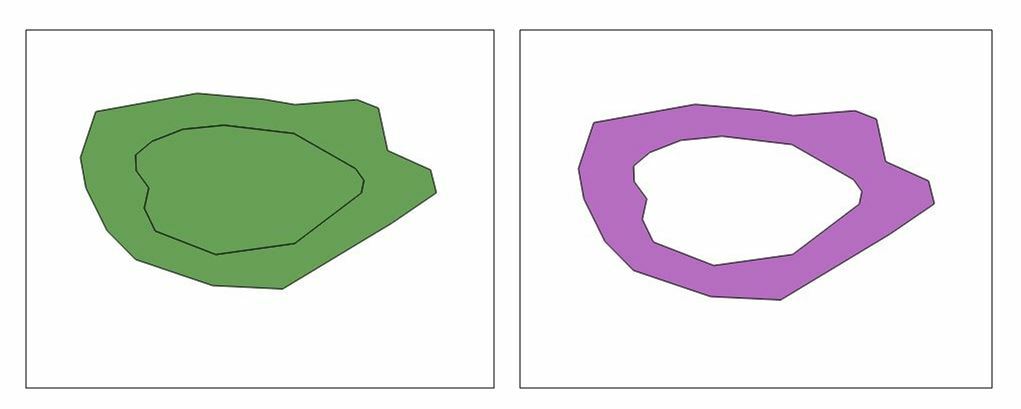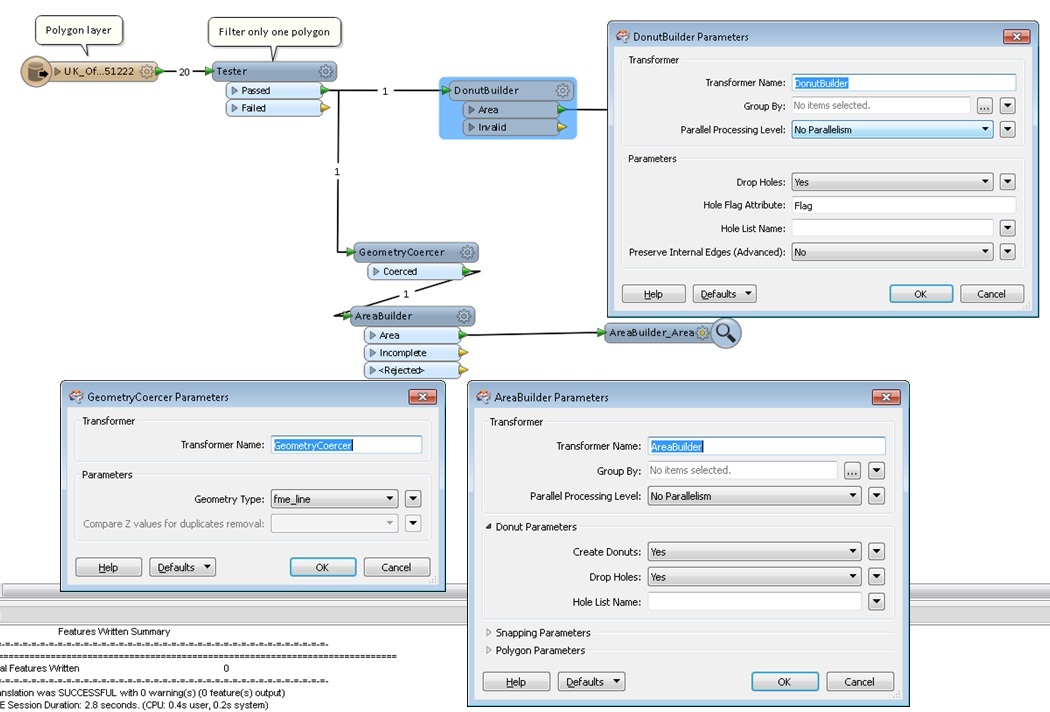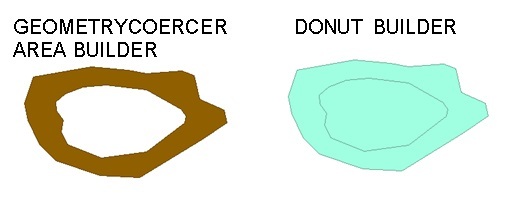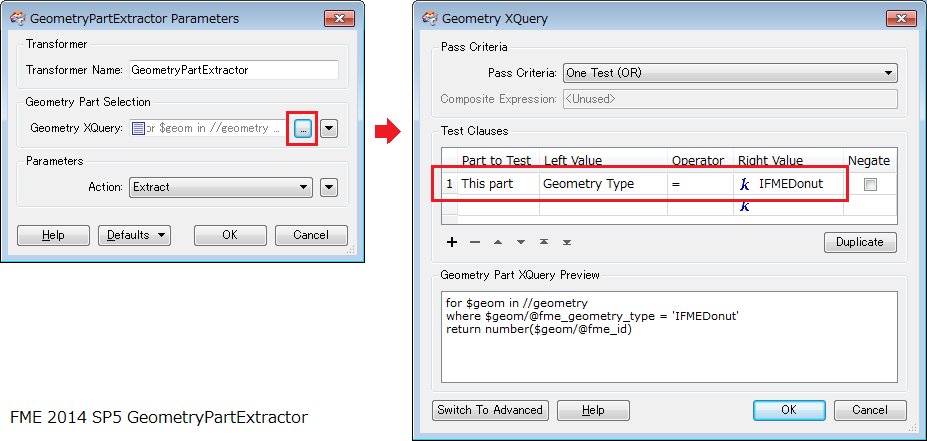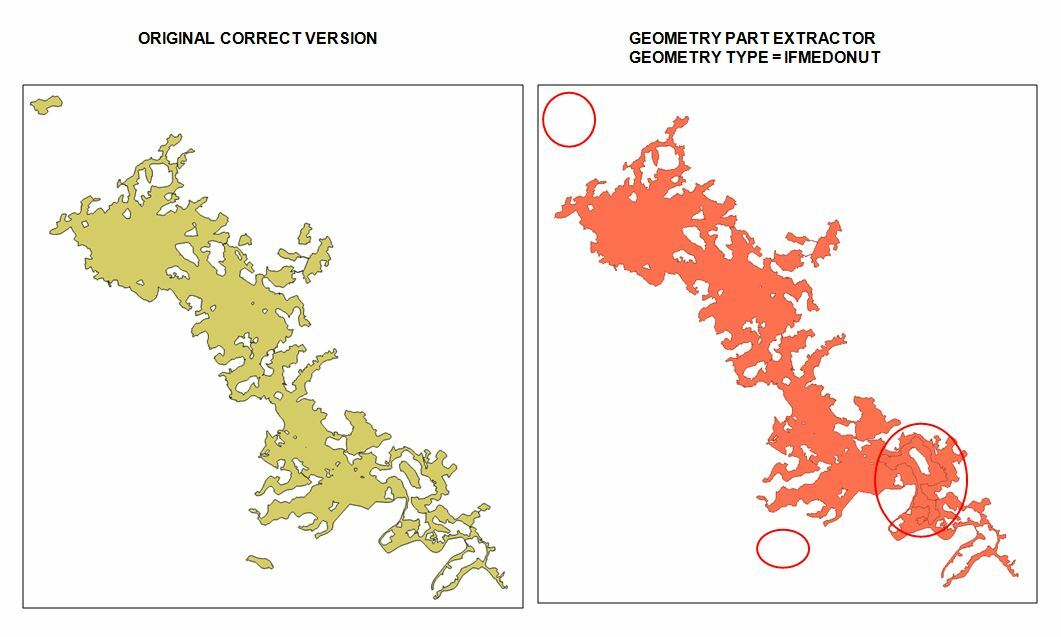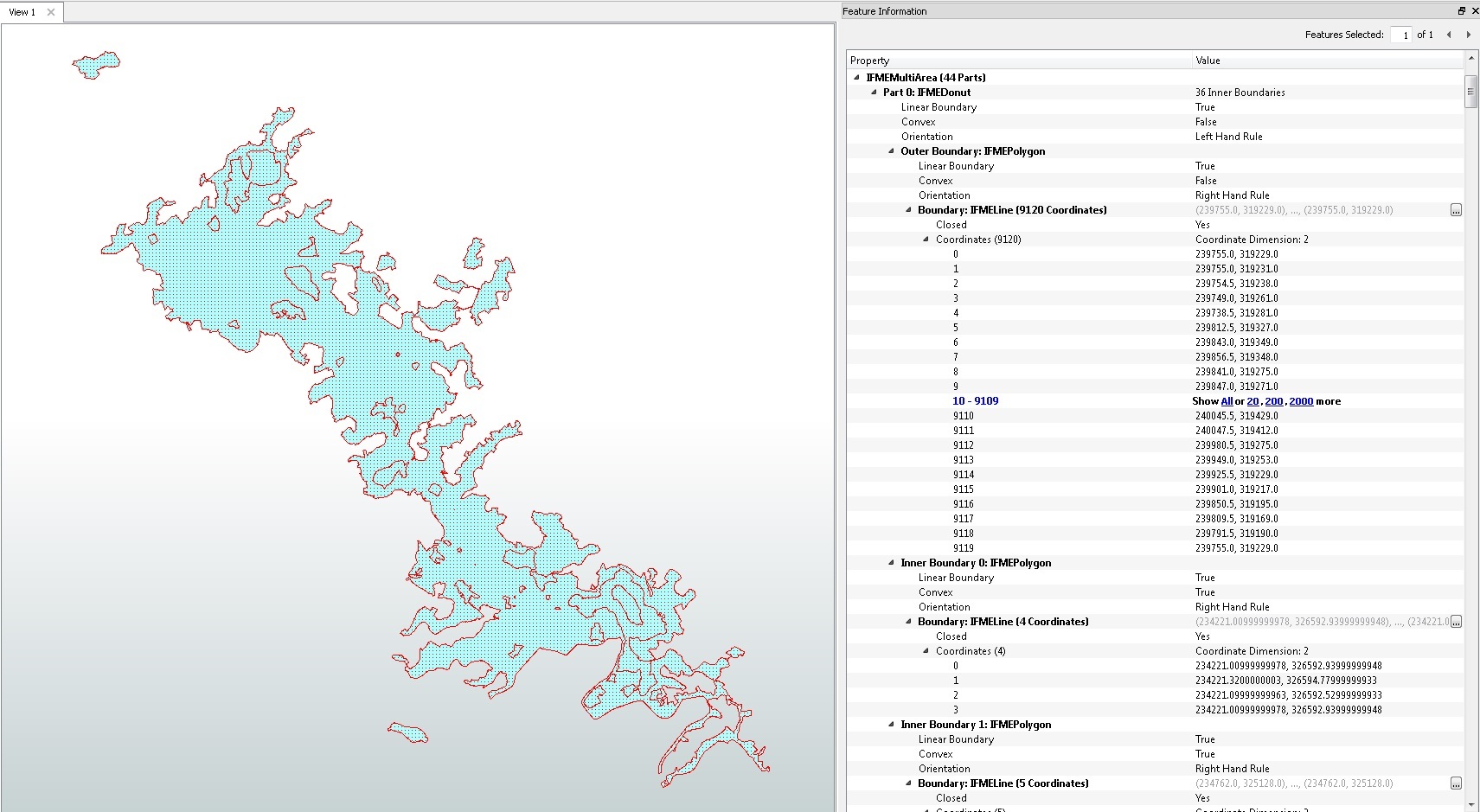I have got a shapefile (left picture) where the donuts have been included as part of the polygon. I need to try to get the outcome of the right picture, which is the correct polygon of the site and which will allow to calculate the correct area of the site.
Is there an easy way of adding a transformer that fixes that?
